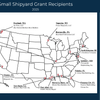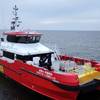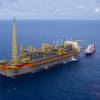Resolve Marine Assists in Sinking USS Oriskany
The process was a long one and proved to be quite daunting from the beginning. Four contractors, who were previously awarded contracts for the remediation task, defaulted on their contracts and never finished the job – it was just too complicated and involved too much red tape. Aside from actually cleaning the vessel and removing potentially hazardous material, the contractor would bear the burden of strict scrutiny of the Environmental Protection Agency. After over 24 months of scrubbing, cutting and scraping and inspection upon inspection at several phases by the EPA, Resolve was rewarded with the agency’s letter of approval to proceed with the sinking earlier this year. The aircraft carrier was built in 1945 and decommissioned in 1977. She was the last of the Essex class carriers in the Navy’s active fleet at the time and served her country during the Korea and Vietnam Wars. Soon after her sinking, the warn-torn vessel will begin service of another type: offering much needed refuge to marine life – the byproducts of which, namely the re-enlivened local fishing and recreational diving industries – will bring a much needed economic boost to Pensacola and the surrounding area after the region was ravaged by Hurricane Ivan in 2004. It is estimated the sunken vessel will bring in more than $8 billion annually to the area via those industries and those that also proper from it, including hotels and restaurants.














